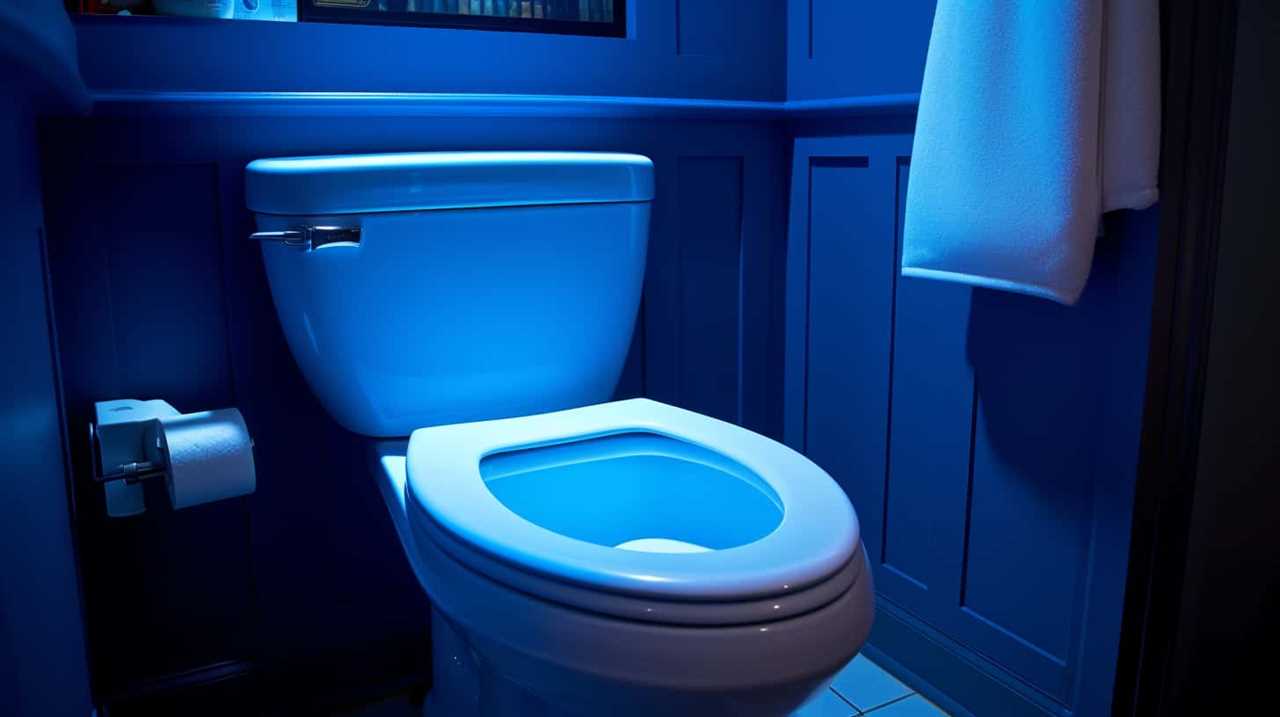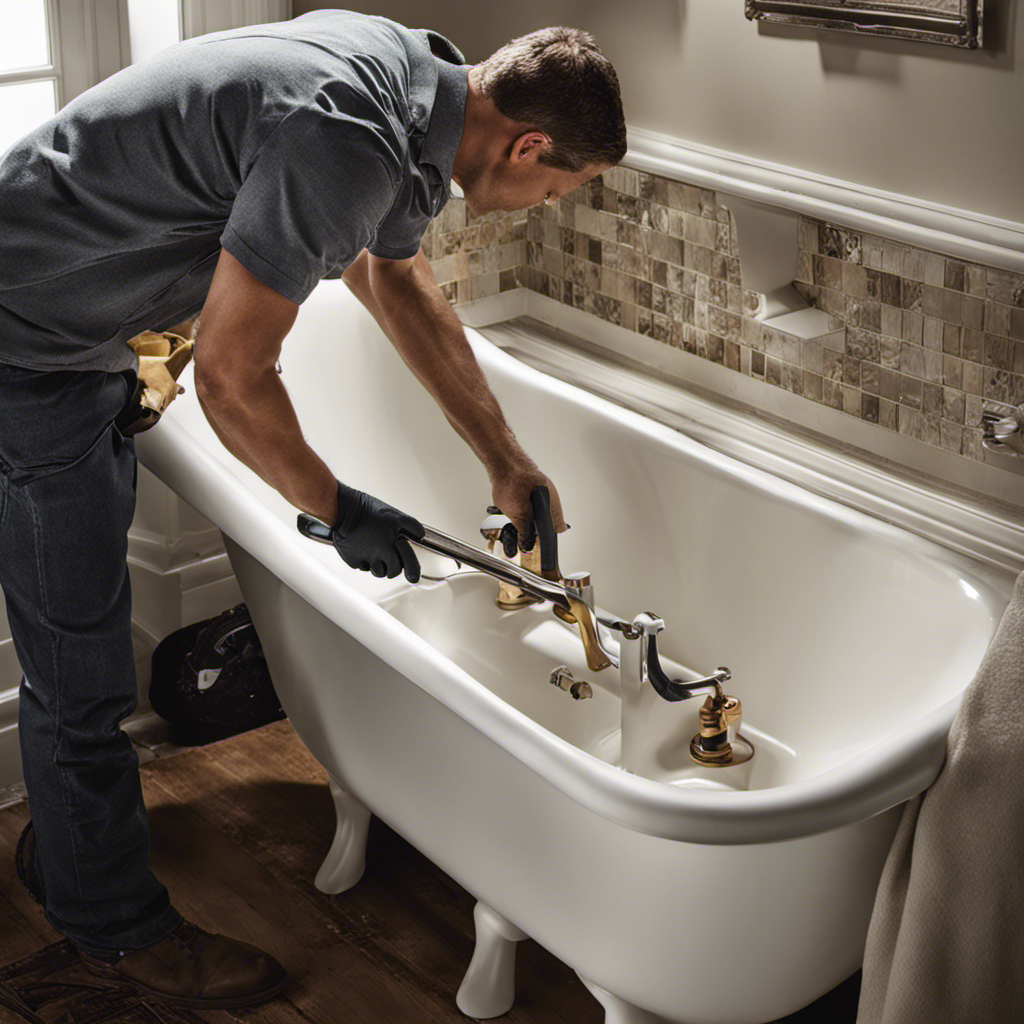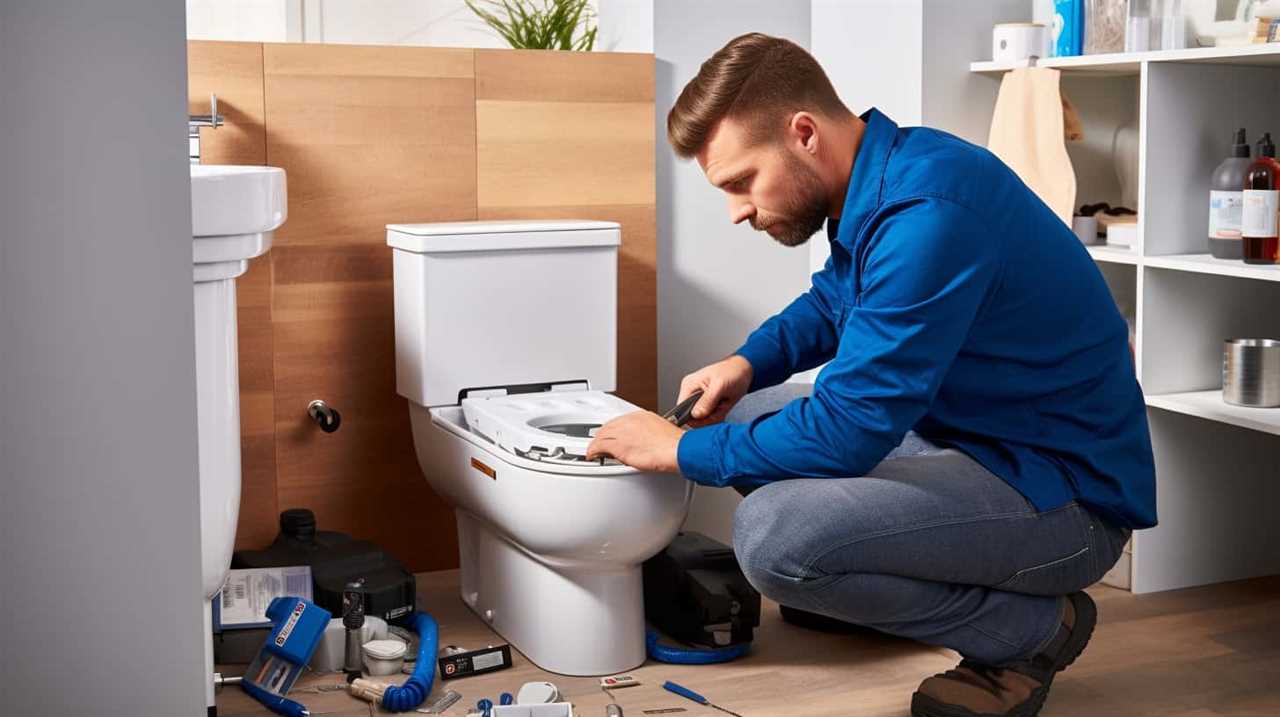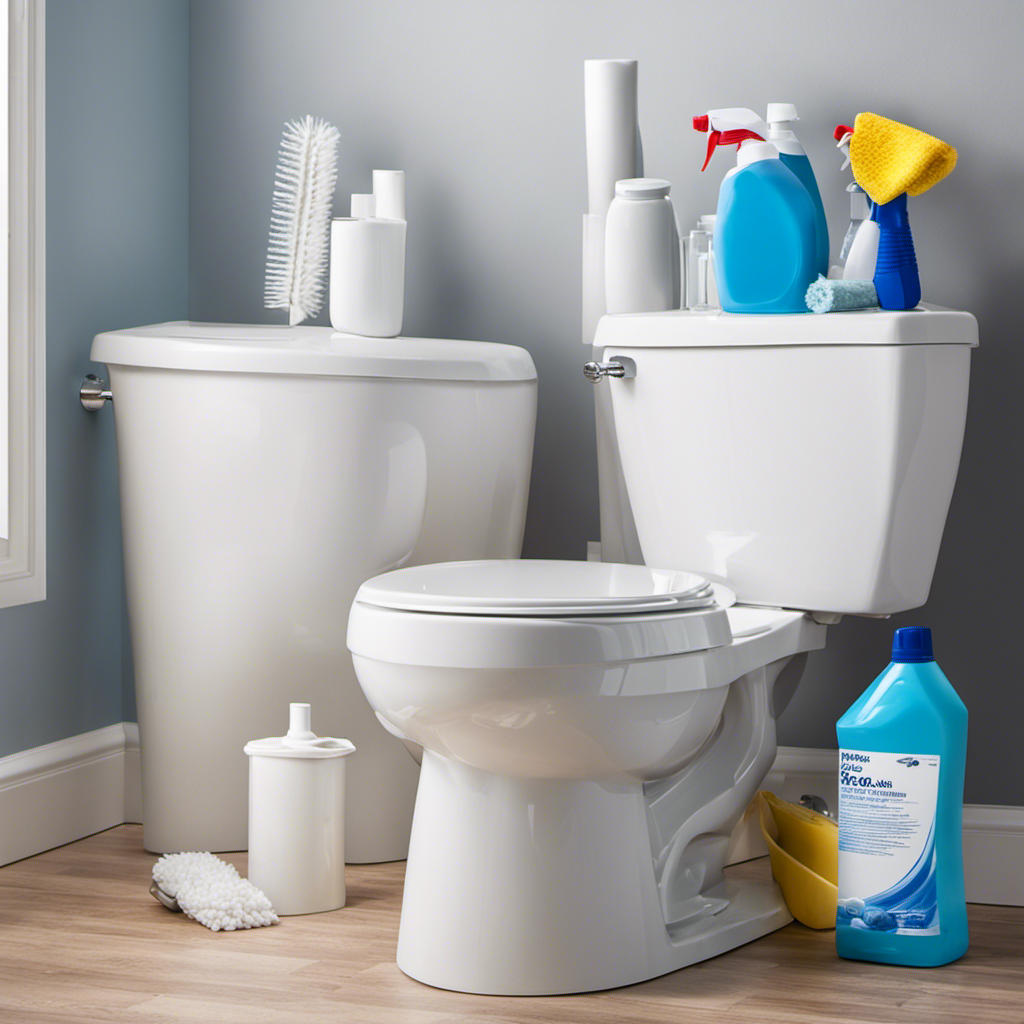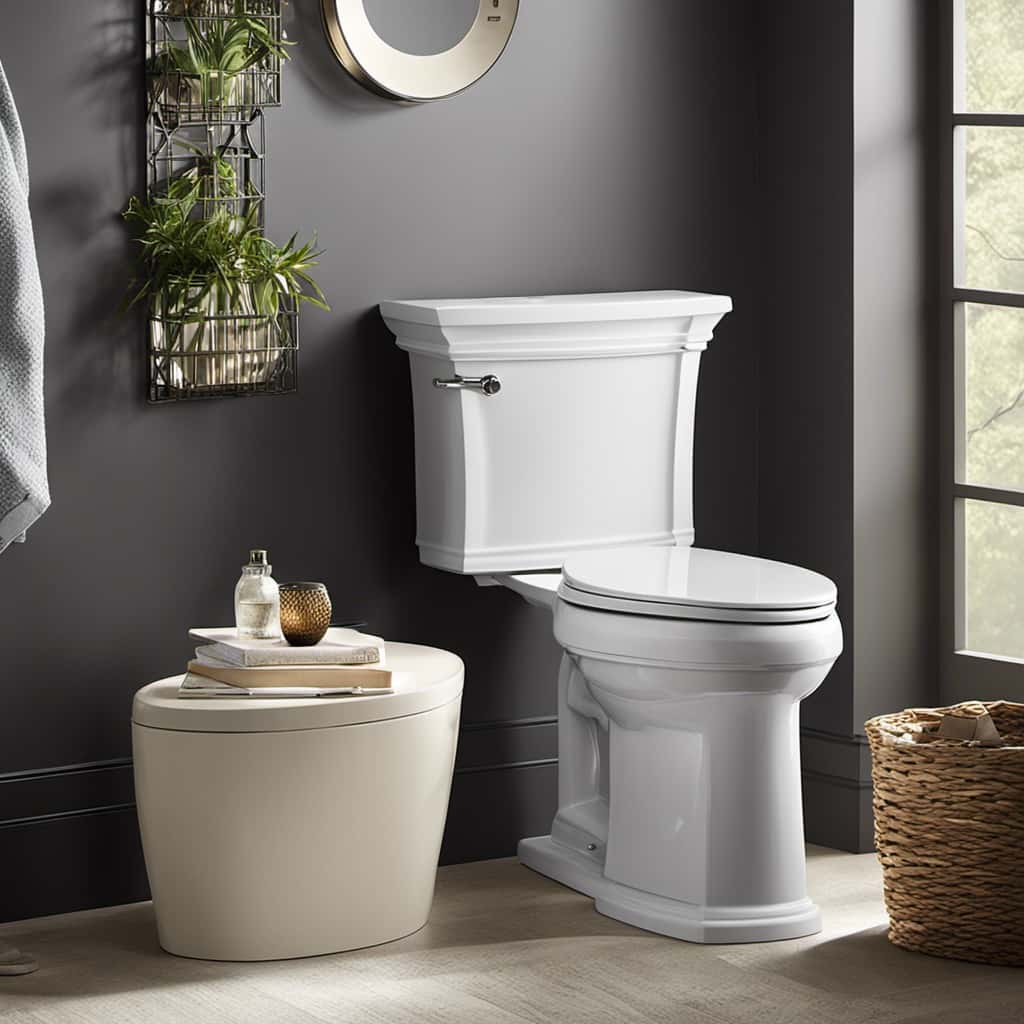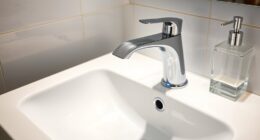Have you ever wondered how much water it takes to flush a toilet? Well, we’ve got the answers you’re looking for!
In this article, we’ll explore the different types of toilets and their water usage, the factors that affect water consumption in flushing, and the various water-saving options available.
Additionally, we’ll provide you with some tips on how to reduce water usage in toilet flushing.
Get ready to become a master of toilet water efficiency!
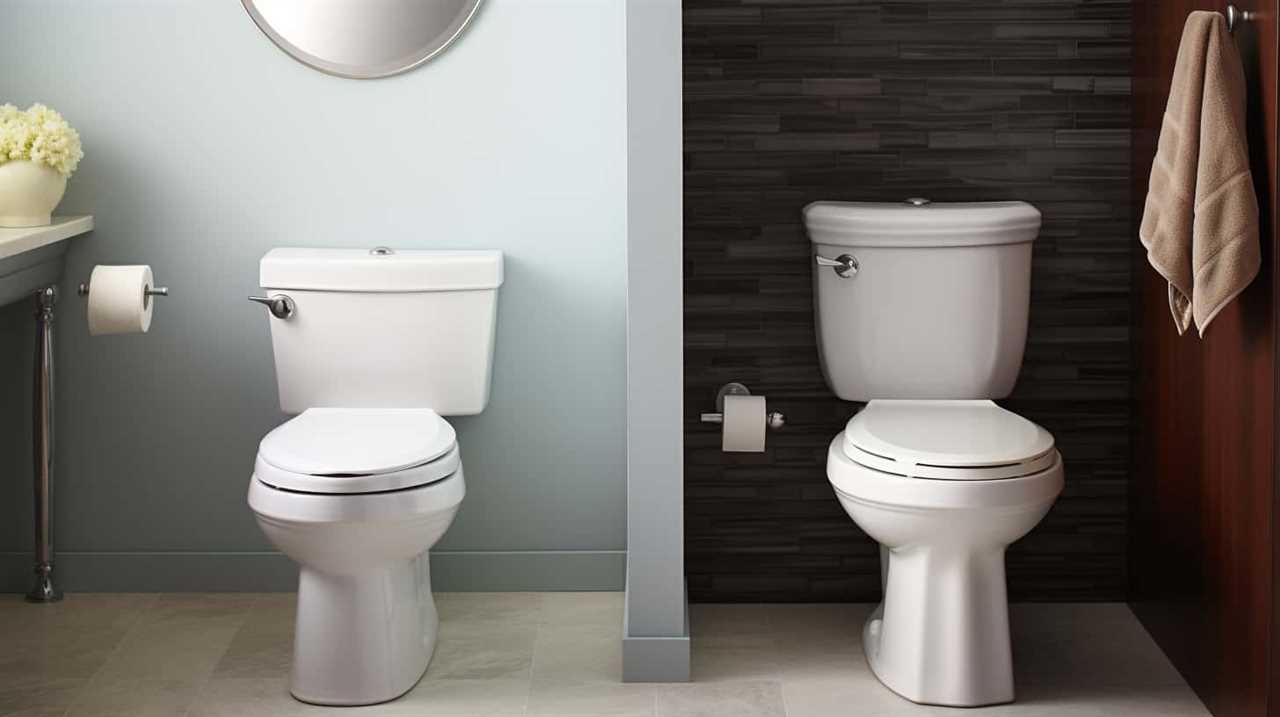
Key Takeaways
- Traditional toilets use 3.5 to 7 gallons of water per flush, while low-flow toilets use approximately 1.6 gallons, reducing water consumption by more than 50%.
- Dual-flush toilets offer users the option to choose between a partial flush for liquid waste and a full flush for solid waste, conserving water.
- The shape and size of the toilet bowl, as well as water pressure in the plumbing system, can affect the amount of water required for an effective flush.
- Water-saving options for toilets include dual-flush systems, pressure-assisted flush mechanisms, improved bowl and trap designs, and adjustable flappers and fill valves. These options help reduce water consumption without compromising performance.
Toilet Types and Their Water Usage
Toilet types vary in their water usage, which has evolved over time due to advancements in toilet design and the impact of water scarcity. Traditional toilets typically use around 3.5 to 7 gallons (13 to 26 liters) of water per flush, which can be quite wasteful considering the limited availability of water resources.
However, with the evolution of toilet design, more water-efficient options have emerged. Low-flow toilets, for example, use approximately 1.6 gallons (6 liters) of water per flush, reducing water consumption by more than 50%. Dual-flush toilets are another innovation, offering users the option to choose between a partial flush for liquid waste and a full flush for solid waste, further conserving water.
These advancements in toilet technology have played a crucial role in addressing the impact of water scarcity and promoting sustainable water usage.
Factors That Affect Water Consumption in Flushing
When considering water consumption in flushing, the design of the toilet bowl itself is a significant factor to consider. The shape and size of the bowl can affect the amount of water required for an effective flush. A larger bowl may require more water to ensure complete evacuation of waste, while a smaller bowl may be able to achieve the same result with less water.
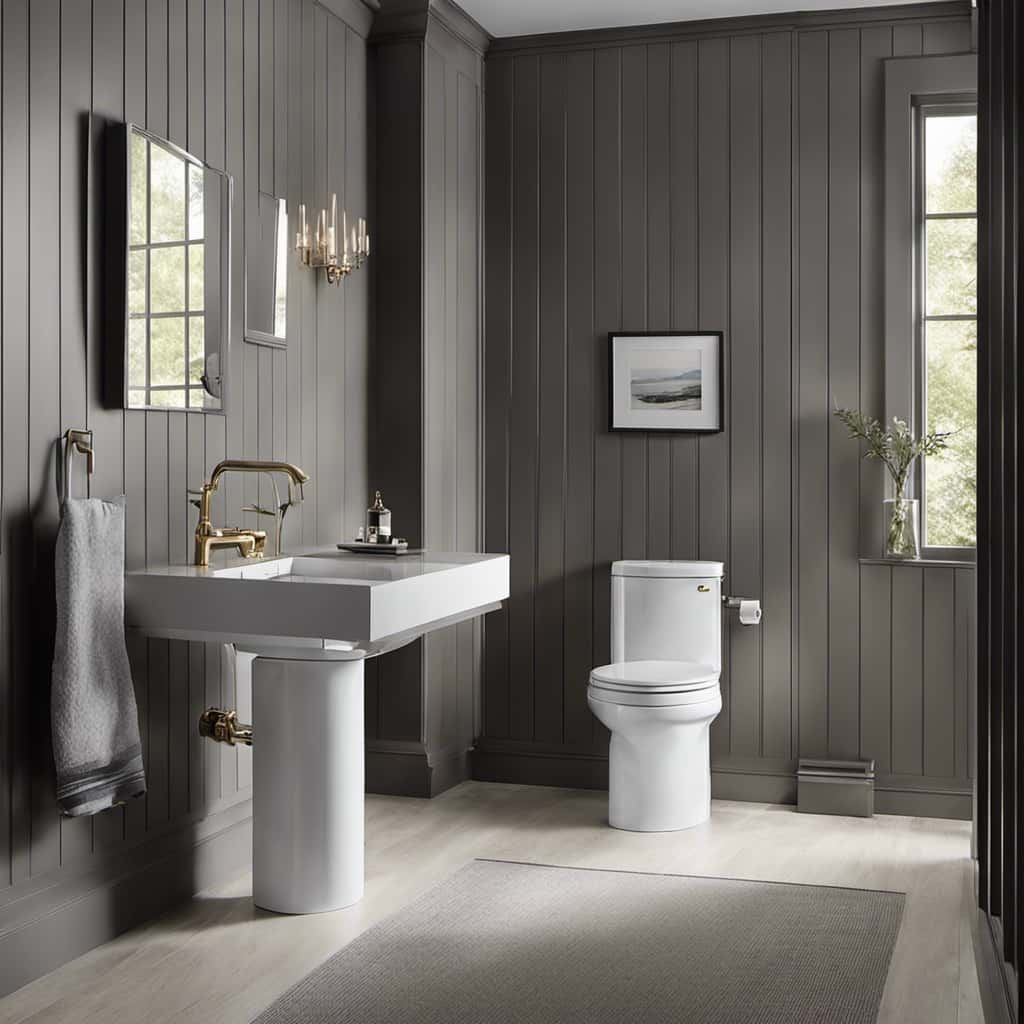
Additionally, the water pressure in the plumbing system can also impact flush volume. Higher water pressure can help to remove waste more efficiently, reducing the need for excessive water usage. On the other hand, lower water pressure may require a higher flush volume to compensate for the reduced force.
Therefore, both the design of the toilet bowl and the water pressure in the plumbing system play crucial roles in determining water consumption during flushing.
Understanding the Flushing Mechanisms
From our previous discussion on factors that affect water consumption in flushing, let’s now delve into understanding the flushing mechanisms. Toilet flushing technology advancements have led to more efficient and water-saving designs. Here are some key points to consider:
- Dual-flush toilets: These toilets feature two buttons or levers, allowing users to choose between a full flush for solid waste or a partial flush for liquid waste. This helps conserve water by using only the necessary amount for each type of waste.
- Pressure-assist toilets: These toilets use compressed air or water to create a powerful flush, reducing the amount of water needed. They’re commonly used in commercial settings or in homes with low water pressure.
- Gravity-flush toilets: These traditional toilets rely on gravity to flush waste. They can be designed with larger trapways and bowls to improve flushing efficiency.
- Water-efficient flush valves: Modern flush valves are designed to release a specific amount of water per flush, ensuring effective waste removal while conserving water.
These advancements in toilet flushing technology, driven by the impact of water scarcity on toilet design, have revolutionized the way we flush, allowing us to save water without compromising performance.
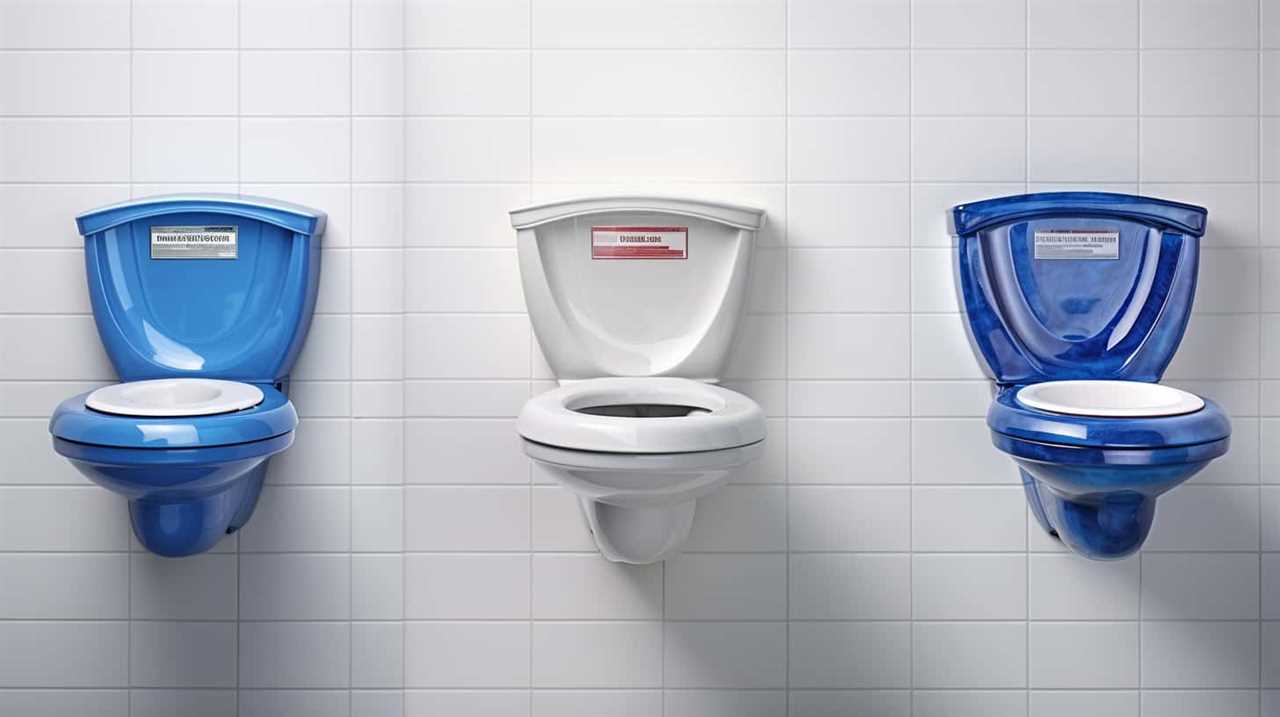
Water-Saving Options for Toilets
Continuing our exploration of water-saving options in flushing mechanisms, we can now delve into the realm of conservation with the implementation of innovative technologies. Toilet efficiency has become a pressing concern in today’s eco-conscious world. Thankfully, there are several eco-friendly flush options available that can help reduce water consumption without compromising performance.
One such option is the dual-flush system, which allows users to choose between a full flush for solid waste and a reduced flush for liquid waste. This simple adjustment can significantly reduce water usage, as liquid waste typically requires less water to dispose of.
Another water-saving option is the pressure-assisted flush mechanism. This technology uses pressurized air or water to forcefully expel waste from the toilet bowl, eliminating the need for excessive water volume. These toilets are known for their efficiency and effectiveness in waste removal.
Furthermore, water-saving toilets often feature improved bowl and trap designs, ensuring that waste is efficiently flushed away with minimal water usage. These toilets also come equipped with adjustable flappers and fill valves, allowing users to optimize water flow and reduce unnecessary waste.
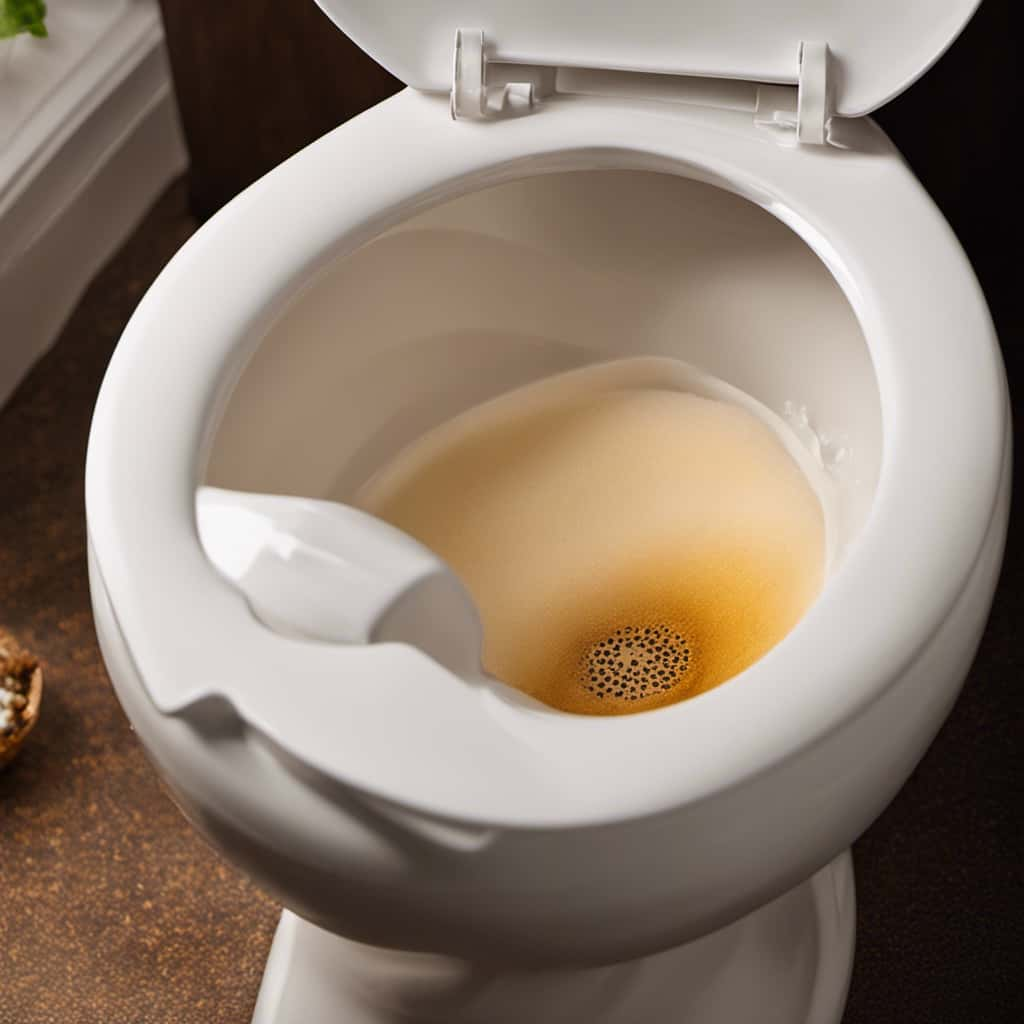
Tips for Reducing Water Usage in Toilet Flushing
To continue our exploration of water-saving options in flushing mechanisms, let’s delve into some practical tips for reducing water usage in toilet flushing.
- Install efficient flushers for toilets: Upgrading your toilet with a dual-flush system or a low-flow toilet can significantly reduce water consumption. These modern flushers offer different options for flushing solids and liquids, allowing you to choose the appropriate amount of water for each flush.
- Utilize DIY toilet water saving hacks: Simple adjustments can make a big difference. Placing a filled water bottle or a brick inside your toilet tank can displace water, reducing the amount used per flush. Adjusting the flapper valve or float mechanism can also help regulate the water level in the tank.
- Check for leaks: A silent leak in your toilet can waste a significant amount of water. To check for leaks, add a few drops of food coloring to the toilet tank and wait for 15 minutes. If the color seeps into the bowl without flushing, you have a leak that needs to be fixed.
- Educate household members: Encourage everyone in your home to be mindful of their flushing habits. Remind them to only flush when necessary and to avoid using the toilet as a wastebasket. Small changes in behavior can lead to significant water savings over time.
Frequently Asked Questions
How Does the Water Consumption of Different Toilet Types Compare?
Toilet water usage comparison reveals the impact of toilet design on water consumption. Different toilet types vary in their water requirements. Understanding these differences allows for informed decisions on water-efficient options.
What Are Some Factors That Can Increase or Decrease Water Usage When Flushing a Toilet?
Factors affecting water usage when flushing a toilet can include the type of toilet, the size of the flush valve, and the water pressure. Water efficient toilet options, such as dual flush toilets, can help decrease water usage.
How Does the Flushing Mechanism of a Toilet Work?
Toilet flushing mechanisms vary in design, but they all serve the same purpose: to efficiently remove waste. By understanding how these mechanisms work, we can optimize toilet water consumption and reduce waste.
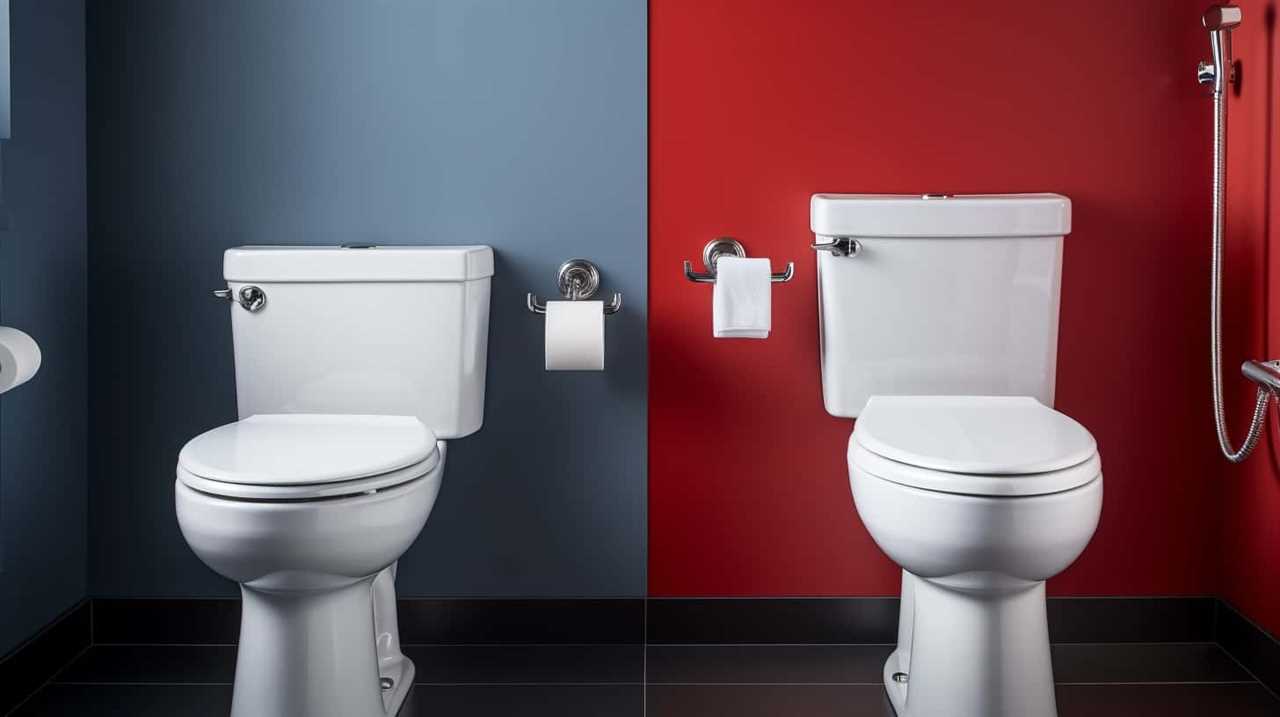
What Are Some Water-Saving Options Available for Toilets?
Dual flush and low flow toilets are water-saving options available. They use less water compared to traditional toilets, helping to conserve water and reduce water bills. These options are effective in achieving water efficiency.
Besides Using Water-Saving Options, What Other Tips Can Help Reduce Water Usage When Flushing a Toilet?
To conserve water when flushing a toilet, we can employ various tips. Alongside water-saving options, innovative toilet designs for water conservation can significantly reduce water usage. Let’s explore some helpful techniques.
Conclusion
In conclusion, understanding the amount of water needed to flush a toilet is crucial for water conservation.
By choosing water-saving options and implementing tips for reducing water usage, we can make a significant impact on our water consumption.

Just like a small drop in a vast ocean, every little change we make in our toilet flushing habits can contribute to a greener and more sustainable future.
So let’s be mindful of our water usage and make a splash in saving our precious resource.
